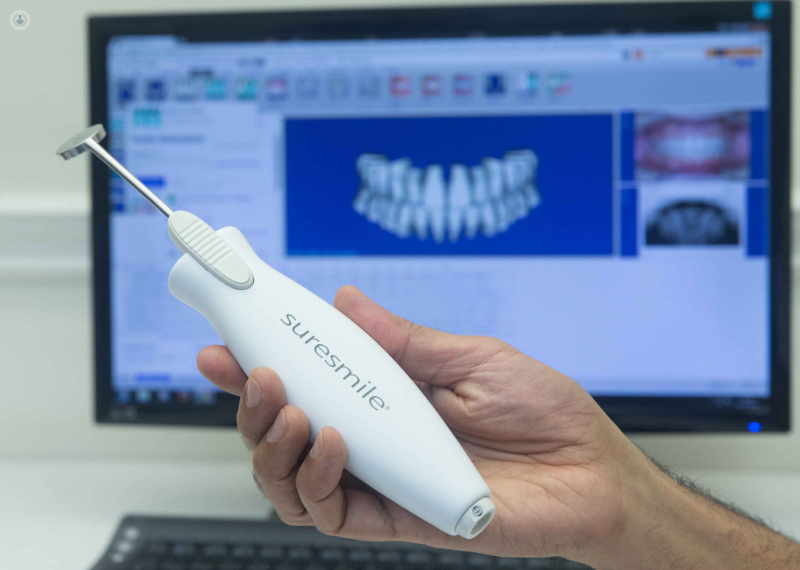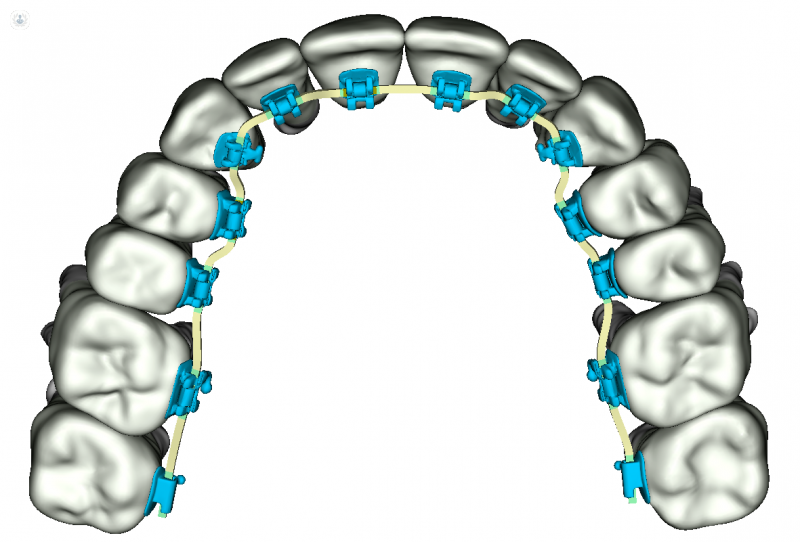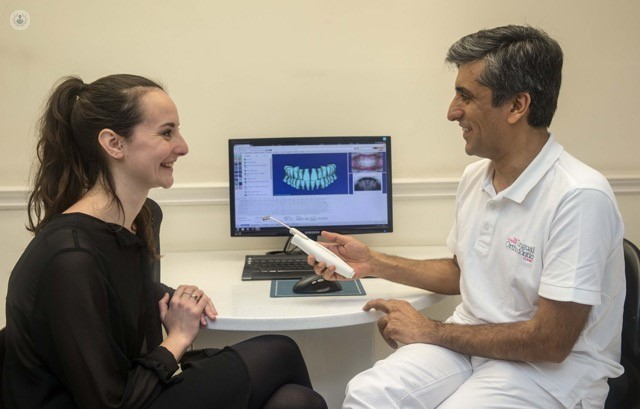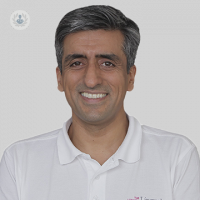Wedded to the digital wow factor
Autore:The future is here, and it’s digital. Why are 3D scanners making such an impression in the orthodontics world? We spoke to Dr Asif Chatoo, leading specialist in orthodontics and founder of The London Lingual Orthodontic Clinic.

In the years after graduating as a dentist and while training to be an orthodontist, I liked nothing more than picking up study models and examining them closely. It was part of what I did. Learning from study models contributed to how I studied to be a specialist, how I learned about occlusion, how I treated my first patients, how I explained the treatments to my patients and then how I assessed the results after the braces came off.
But that phase of my life is over. I am now almost fully digital. For most patients, I look at representations of patients’ teeth on my computer screen. It’s as 3D as anything I used to hold in my hand!
A model for the future
I have invested in a scanner which Renata and Yasmin, the orthodontic nurses, use as part of the record-taking. It’s extremely fast and allows my team to make accurate and detailed records of patients’ upper and lower arches. I was an early adopter of digital technology and at first, the scanning process took a long time but now it’s a matter of minutes. As soon as the completed image is stored in the patient’s notes, I can study the models.
It goes without saying that a key benefit of digital technology is the integration of the orthodontic processes and records. For instance:
- the scan of patients’ teeth can be superimposed onto a photograph which I can in turn integrate onto a grid, to assess the degree of crowding and other features of the malocclusion.
- I can relate the teeth positions to facial planes and also check that the dental and facial midlines are ideal.
- I can show the patient their teeth and how they bite and I can give them a visual simulation of the difference that treatment will make. They can then ask questions.
Being able to manoeuvre the screen-based images through 360⁰ means you can cover all aspects of the treatment planning process with the patient. They can influence the process if they wish and if, as treatment progresses, they change their mind on a tiny detail, or their dentist requests a change, the technology allows me to make some late edits to the plan.

The last wire-bender
Before the days of digital, at the end of conventional treatment, whether the brackets were on the lingual or labial surface, bending archwires, was almost always inevitable. It’s an aspect I used to dread. Why? If you bend a wire for one tooth, you will affect all the other teeth. When I moved to a digital system, I said farewell to last-minute wire-bending. It didn’t arrive a day too soon!
Using SureSmile®, the digital system I currently favour, wires are bent to my prescription by robots. This is the height of customisation. The SureSmile® system also incorporates a rigorous treatment planning process allowing the clinician to systematically review each case. It provides an effective tool to communicate the presenting problem and a clinical solution to the patient. It also allows for an improved discussion with a referring dentist to be able to achieve the best outcome in the more tricky interdisciplinary cases. I am able to choose my own brackets – and have devised a system for accurate placement. If a change is required in the bracket position it can be easily done and new wires ordered. Everything is easily integrated into the patient’s online file.
It is now also possible to manufacture a number of removable and fixed orthodontic appliances, such as retainers and expansion devices from the digital scan. The days of the physical impression are numbered.
Digital technology has allowed for greater sophistication of the lingual appliances for some time. With digital bracket positioning, CAD CAM designed brackets and robotically bent wires the appliances are able to precisely deliver the planned tooth movements1. A retrospective study of treated cases with customized lingual appliances have shown discrepancies of less than 1mm in linear movements and 4° in angular measurements between the predicted set up and the final outcome2.
SureSmile® (Orametrix, Richardson, Texas) has taken this precision to a new level with their digital planning platforms and 4th generation robots to bend wires. Studies have shown that the treatment wires may be bent with median deviations of 0.19-0.21 mm based on translational movements and 1.77°-3.04° based on rotational movements (3). These bends may be made in ductile and non-ductile wires. The accuracy of the bends in these wires is superior to that which is achievable through manual wire bending and other lingual orthodontic systems.
Aligned to your needs
The use of the SureSmile® platform has also allowed for greater flexibility in providing treatment. It is now possible to accurately plan and provide treatment for a patient using different types of braces for the upper and lower arch. For instance, it is possible to accurately co-ordinate arch relationships with lingual braces in the upper arch and aligners or fixed labial braces in the lower arch. There is only one platform required to fully integrate the different appliances so that it is easier to compliment the patient’s preferences for treatment.

As a cautionary note, it must be remembered that digital technology is a powerful tool that is there to facilitate the management of the treatment. Proper mechanics and sound orthodontic principles must still be applied in order to move the teeth and achieve a good outcome. The clinician must orchestrate the treatment and not vice versa.
I want to deliver several things to my patients:an aesthetic result, an occlusion which is comfortable at rest and a functional occlusion. More than anything, I want them to be wowed by their experience. I believe SureSmile® delivers that wow factor. So my patients are happy.
The clinical team are delighted to have given up on taking impressions, in my opinion, the most trying aspect of record-taking. It was invariably messy. Being impression-free has brought more value to them than going paperless.
What about me? Well, I do occasionally hanker nostalgically after being able ‘to have and to hold’ a study model. But there are so many benefits to being paperless, impression-free and integrated. From this day forward, I am wedded to digital orthodontics.
1. Wiechmann D, Rummel V, Thalheim A, Simon JS, Wiechmann L (2003), Customized brackets and archwires for lingual orthodontic treatment, Am J Orthod Dentofacial Orthop.124: 593-9
2. Grauer D, Proffit WR. (2011), Accuracy in tooth positioning with a fully customized lingual orthodontic appliance, Am J Orthod Dentofacial Orthop 140:433–43.
3. Muller-Hartwich R, Jost Brinkman PG, Schubert K (2016), Precision of implementing virtual setups for orthodontic treatment using CAD/CAM-fabricated custom arch wires, J Orofac Orthop. 77(1):1-8.
Asif Chatoo founded the UK’s first clinical dedicated to lingual, The London Lingual Orthodontic Clinic, in 2005. He is the only orthodontist in the UK to be accredited by both the World Society of Lingual Orthodontics and the European Society of Lingual Orthodontics. For more about Asif or LLOC, visit: www.londonlingualbraces.com



